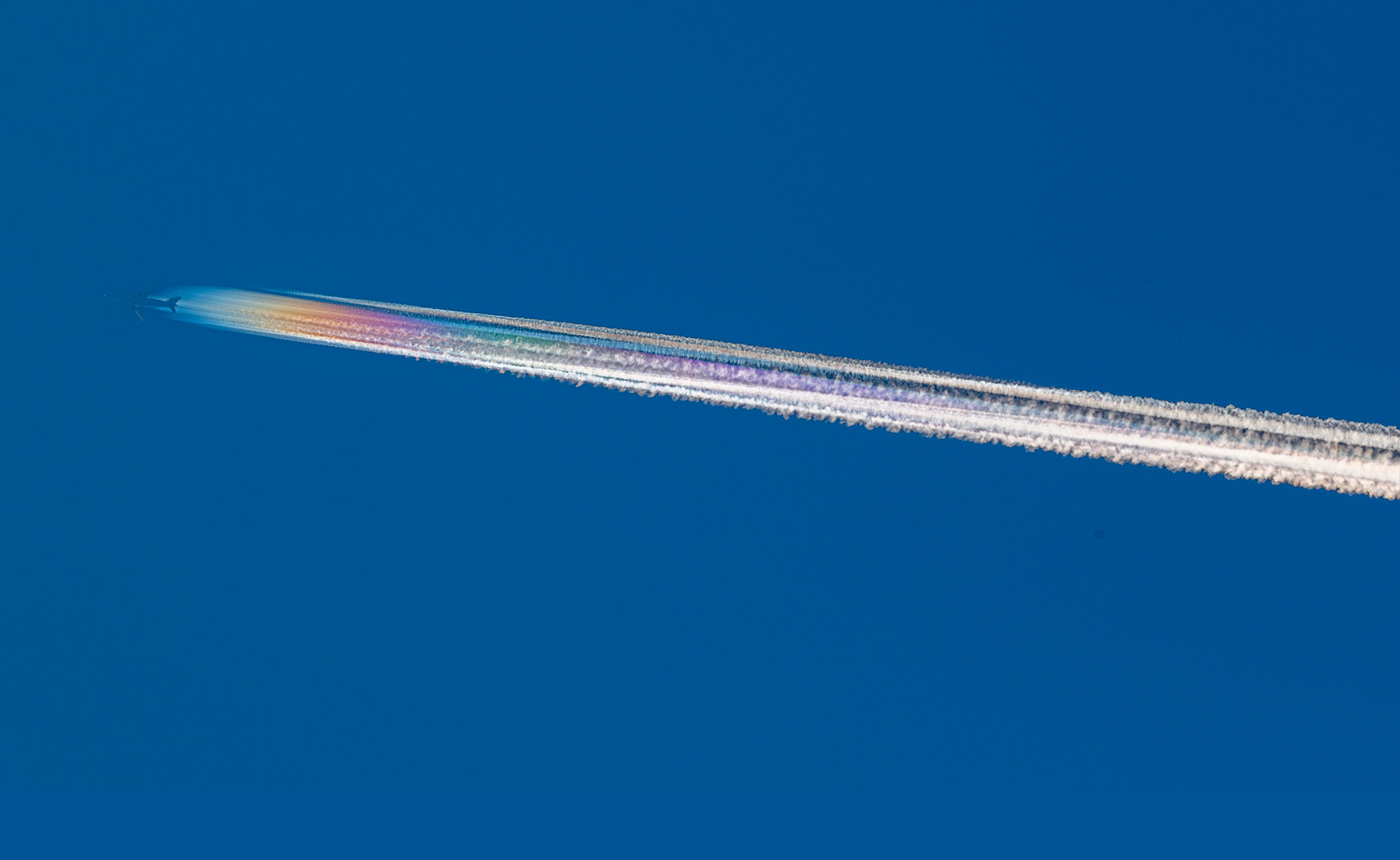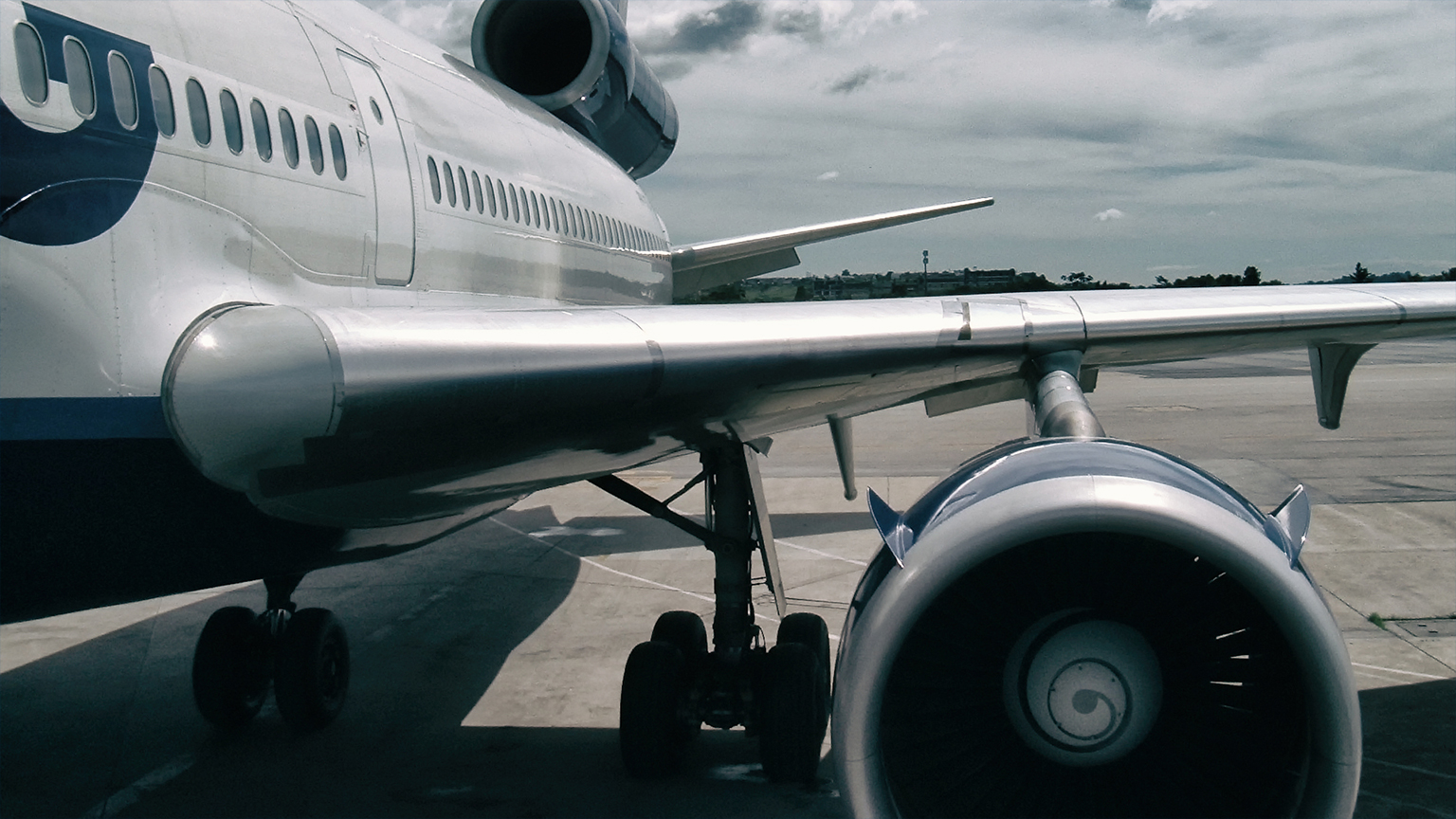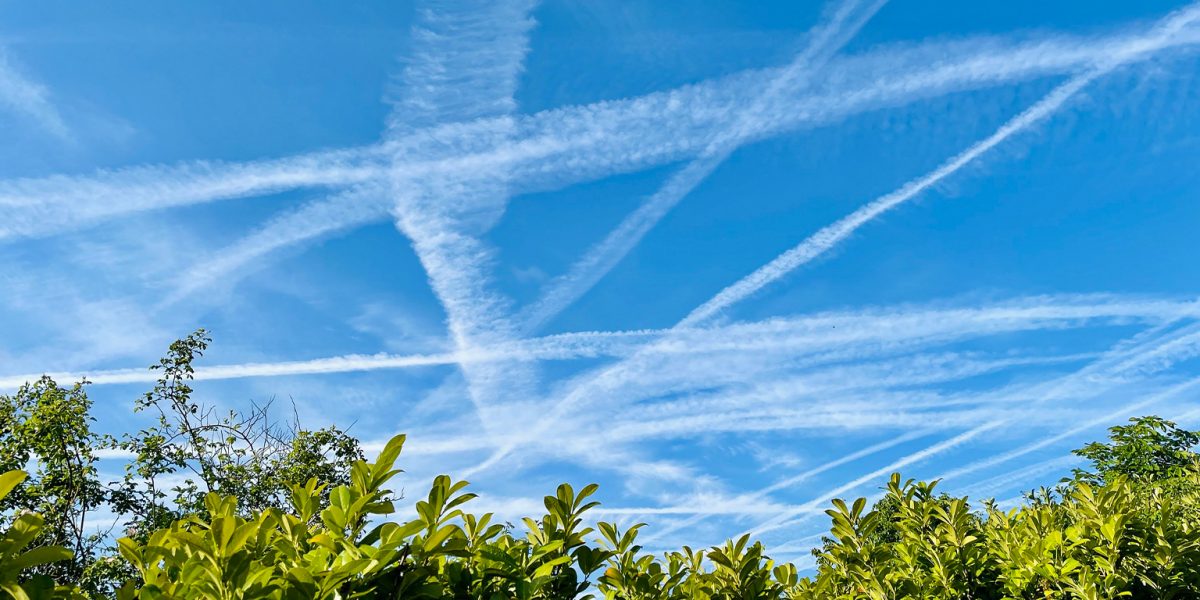- The aviation sector is booming, with the number of flights in 2023 expected to outstrip the industry’s 2019 peak. Commercial aviation is already responsible for 2-3% of global carbon emissions. With the renewed surge in air travel, those emissions are only likely to increase in coming years.
- Current efforts to reduce aviation carbon emissions focus on the production of sustainable aviation fuels (SAFs), which include both liquid biofuels (made from algae, food crops and food waste) and synthetic options (such as green hydrogen or synthetic kerosene).
- SAFs, while they emit equivalent carbon as fossil fuels when burned in flight, offer a potential means for reducing emissions due to their far greener life cycle as compared to fossil fuels, say experts. But SAFs come with myriad caveats: risks of environmental harm, high costs, and currently limited supply.
- Ramping up SAF production while reducing environmental harm to ensure these fuels are truly sustainable is the goal. However, most experts agree that even if SAF production is scaled up, the most promising biofuels in current scenarios won’t likely provide enough emissions savings to stem aviation’s climate impacts.
Battered for three years by the COVID-19 pandemic, the commercial airline industry’s recovery is now in full swing. Forecasts say that customer demand, and air transport climate change-inducing emissions, will soon soar above 2019 levels, when carbon releases reached 920 million metric tons.
In total, the industry is responsible for an estimated 2-3% of global carbon emissions, or around 4% of human-induced warming, according to one study; that’s more than many countries, including Brazil and Germany, individually produce.
The industry continues working toward a solution to its carbon emissions and climate image problem, known as sustainable aviation fuels (SAFs). But that goal is currently a long shot at best, according to most analysts.
SAFs come in two main varieties based on sourcing: Liquid biofuels are made from algae, food crops and food waste (including used vegetable oils and even sewage), while synthetic fuels include green hydrogen or synthetic kerosene. Both biofuels and synthetic fuels could be key routes to cutting the aviation industry’s heavy climate footprint, though big challenges loom.
In the near term, “drop-in” fuels — those not requiring overhauls of existing aircraft engines — remain the most direct immediate way to cut aviation emissions, say experts.
The “bottom line,” says Candelaria Bergero, is that a lot of these SAFs will be needed to meet the aviation industry’s carbon-reduction goals. Bergero is an Earth system science Ph.D. student at the University of California, and was part of a team that released a 2023 paper analyzing net-zero pathways for aviation.
The problem, say analysts, is that these new fuels currently account for a minute fraction of airline fuel — as little as 0.1% in 2022.
Some SAFs, predominantly based on food waste, are already in use by airlines, albeit at an extremely limited scale. In 2022, an estimated 450,000 flights used SAF blended with conventional fuels, out of a total of around 27.9 million flights globally that same year.
“Whether we can scale production [up] fast, and whether we can actually create these fuels [to achieve] net zero carbon emissions is a big question,” Bergero told Mongabay in an interview. “We should be trying to answer these questions.”

Can we count on SAFs for carbon cuts?
Neste, currently the world’s leading SAF producer, emphasizes that its biofuel, sourced from used cooking oil, can reduce emissions by up to 80% when the fuel is used in its “neat” form — i.e. when not blended with kerosene. But at present, flights using Neste’s SAF run with a maximum blend of 50%, achieving less impressive carbon reduction benefits.
When supplied in a 40% blend, Neste’s SAF offers only a 32% reduction in net emissions versus fossil fuels, according to Jonathan Wood, Neste’s vice president for commercial and technical management of renewable aviation.
“Clearly that’s a great step forward but it’s not the end game,” Wood said. Tests are underway to achieve 100% unblended SAF flights.
A major challenge SAFs face is that, like fossil fuels, they still must be burned for a plane to fly, so they release carbon dioxide when ignited. As a result, maximizing benefits depends on cutting carbon emissions along the entire SAF supply chain and throughout their entire life cycle. For example, crop-based biofuels have an advantage over traditional fuels because they absorb atmospheric carbon as they grow, advocates say.
But that life-cycle carbon saving isn’t necessarily a game changer, according to some experts. Tim Johnson, director of U.K.-based NGO Aviation Environment Federation, says SAFs merely offer an “accounting route” to lower emissions on a net basis. “There’s nothing magical about SAFs and biofuels in terms of their ability to reduce emissions,” he said, likening them to a carbon offset, rather than a true carbon reduction.


“We’re not keen on waste-liquid [SAF] pathways and we would agree there shouldn’t be crop-based biofuels,” Johnson says. Instead, his NGO favors the synthetic fuel approach, which is dependent on affordable, direct-air carbon capture, and the production of green hydrogen. But based on ongoing synthetic fuel research challenges, “That has to be a long-term vision,” he said.
Not all SAFs offer equivalent lower life-cycle carbon benefits, and many pose other environmental threats. Earlier this year, the Royal Society, the U.K.’s national academy of sciences, published a report assessing a variety of alternative fuels, including biofuels, and found that availability and accessibility are key problems, among a litany of others. “What we saw is that there’s a huge range of uncertainty in terms of the environmental impact of these fuels,” said Marcelle McManus, an author of the report and professor of energy and environmental engineering at the U.K.’s University of Bath.
Another “quite stark” finding, she explains: Some proposed fuels don’t meet the carbon-reduction targets set by some governments, such as the EU and the U.S., the latter of which is aiming for 50% life-cycle reductions from fuels. As things stand only a “very few” fit the bill, according to McManus: “Biofuels made from oil crops, with their current processes, don’t meet the targets,” she notes.
McManus believes that any truly promising SAF will need to depend highly on the location in which it’s grown. For the U.K., for example, that includes fuels based on lignocellulosic materials, forestry residues, and a few other organic waste streams. “I’m not anti-biofuels in any shape or form,” she added. “What I want is to be sure that we have a sustainable solution, and we use the right biofuels in the right place.”
SAFs have the potential to be carbon neutral, some experts agree, but achieving net-zero emissions depends on the speed at which they can be developed and whether they’re linked to other sustainable technologies, such as carbon capture, which reduce the emissions footprint, but are currently lacking.

Other enviro impacts: Particulates and contrails
Carbon emissions are only part of aviation’s warming dilemma. That’s because jet engines, no matter what their fuel source, release a mix of nitrous oxides, sulfate aerosols, soot and water vapor, which all exacerbate climate change.
Warming impacts arise in contrails, the narrow stream of cirrus-like clouds that trail behind jet planes. Contrails trap solar energy, and though they persist for only short periods, can increase warming to a greater degree than a jet engine’s emissions alone, according to research.
The overall climate impact of contrail formation is still not fully understood, and tests are ongoing, said Piers Forster, an atmospheric physicist at the U.K.’s University of Leeds. They “certainly add” to aviation’s warming burden, he noted. But experts, including Forster, agree that current indications are that SAFs could reduce some of the non-CO2 emissions — especially diminishing the warming impact of contrails because SAFs emit fewer particulates than conventional aviation fuels.
“We can kind of immaturely say that the [SAF] contrails will reduce [warming],” said Bhupendra Khandelwal, a University of Alabama researcher. “We don’t know what the [precise] final impact will be, but overall, looking at preliminary results, the contrails should reduce if we start using SAFs because the particulate matter will reduce.”

A sustainably fueled aviation future?
Experts contacted for this story largely agree that if SAFs are produced sustainably. using appropriate feedstocks, then they can help reduce aviation’s heavy emissions burden. By 2050, it’s thought these fuels could make up 65% of “carbon mitigation” for the sector. But to do so, 449 billion liters (119 billion gallons) would need to be produced every year, according to the IATA. That’s a far cry from the hundreds of thousands made annually now.
The fundamental challenge facing the sector is sourcing enough raw materials to produce the most promising fuels at competitive prices. A paper released earlier this year by supersonic aircraft manufacturer Boom Technology optimistically states that the SAF industry “displays hallmarks of the early stage, exponential growth patterns seen in other renewable energy industries.”
An earlier review by a researcher at the University of Florence found that the need for the massive scale-up of production, investment and guaranteed availability of a variety of SAF feedstocks — particularly those waste streams already in use by other industries — remain challenges to growth; sticking points on which other experts agree. An interim goal of 10% of aviation fuel from SAFs by 2030 has been set by the industry and national governments such as the U.K., but would require construction of some 300 production plants globally.
“We’re at the very beginning of this journey,” Neste’s Wood said. His company estimates it will produce 1.5 million metric tons (1,950 billion liters, or 515 million gallons) of SAF by the end of 2023, with further growth expected. “It’s critical that we ramp up quickly because we can’t wait until 2040 and beyond. We need to be delivering significant volumes of SAF this decade.”
Johnson believes this year is a “crucial moment” for sustainable aviation fuels, saying it’s essential to get them right. “If you want lots of supply, maybe there’s going to be pressure to set the environmental bar quite low,” he said. “Equally, if you set [that environmental bar] really high, are you going to get the scaling that we need?”
No matter SAF progress over the next few years, analysts agree that pegging the aviation sector’s sustainable hopes and carbon cuts entirely on SAFs is impractical. Other solutions are necessary, particularly in the short term, to drive down aviation’s emissions — solutions to be explored in the second article of this two-story series.

